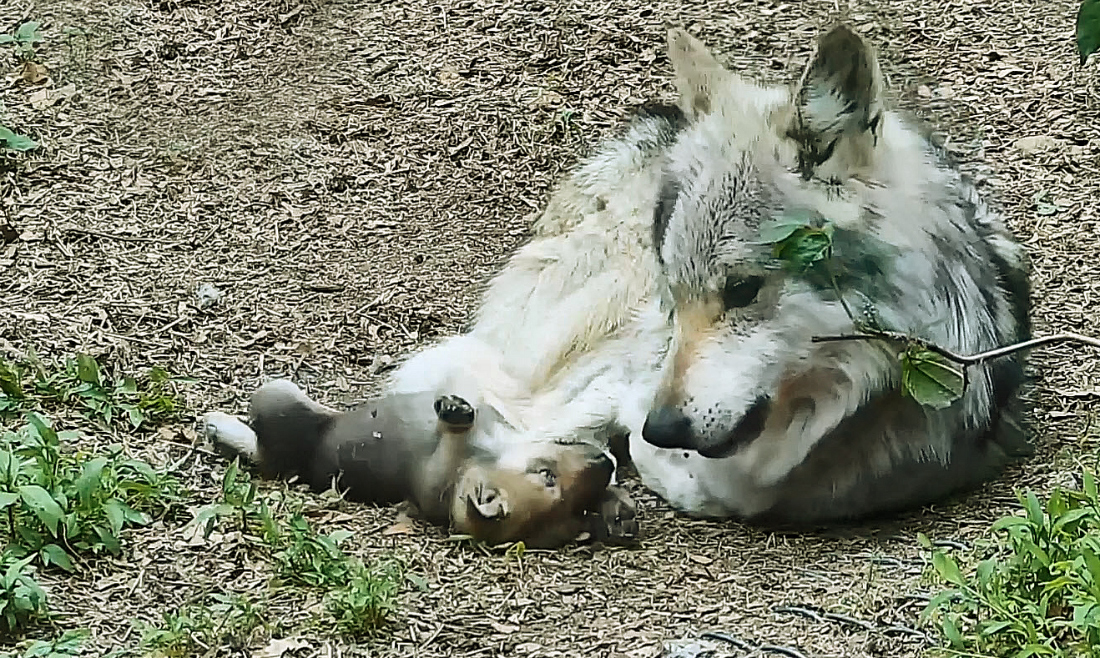
Dad. Dad. Dad. Dad. Daddy. Dad. Dad. Dad. Dad. Dad. Dad. DADDY!?
This is what fatherhood looks like for wolves too.
Is Mexican gray wolf Lighthawk being a grumpy dad? Perhaps; raising 7 kiddos is hard work and requires a lot of patience.
Beyond his potential irritability, however, Lighthawk is fulfilling his parental obligations by setting some rules for his pups of the year.
Wolves mainly use body language to convey the rules for the family. Wolf families usually consist of the breeding pair (mom and dad) and their offspring of varying ages. Sometimes unrelated wolves will join a family too.
To maintain order, wolves will rely on their posture, tail position, facial expression and ear position to articulate their status and role within the family. Wolves will also use body language to communicate intentions or to initiate some fun.
The parents (sometimes referred to as the “alpha” pair) are the leaders of the pack, and they express their status with erect posture and tails carried high. The less dominant family members (usually the offspring in the family) exhibit their position through submissive behavior.
With lowered tails and posture, less dominant wolves acknowledge their role and rank in the family hierarchy. Pawing, tail tucking, and muzzle-licking are among the submissive gestures expressed by less dominant wolves.
We hope you enjoyed spending time with these beautiful wolves!

Last 3 Comments